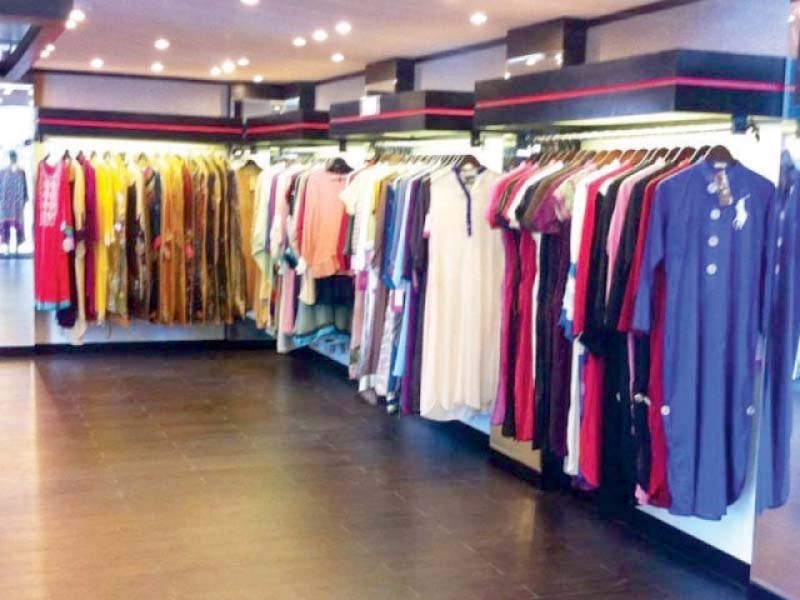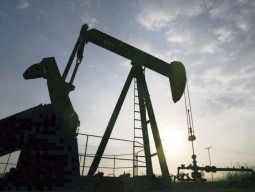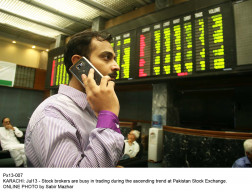
Over the years, retail has emerged as one of the top trending sectors, where many domestic and foreign firms have invested heavily. According to retail-sector analysts, fashion retailers have enjoyed a yearly double-digit growth of 25-35% over the last eight to 10 years.
However, this growth has slowed down and currently ranges between 8% and 10%, with the potential to rise once again but with some changes. Javed Siddiqi, Director of Stylo, a local ladies’ footwear, pret and accessories’ brand, said the decline in growth rate was the combination of many factors, some of which were the result of government’s policies and a few due to the industry’s own practices.
“Over the years, this industry has promoted the sales culture, which has now become a menace for the entire industry,” Siddiqi told The Express Tribune.
“This has put the rising middle class as well as affluent strata of society in a habit of waiting for the promotional sales season, which now continues for almost the entire year,” he added.
According to Siddiqi, the retail sector’s business calendar runs for almost 330 days. Of these, various brands offer discounts for 220 to 250 days, which leaves a mere 80 to 100 days in a year for them to display and sell their products at the full price range, putting almost all major brands under pressure. Many brands fail to learn the retail phenomenon, which gives profits in the first year, but in the following years, many retailers overbuy to maintain inventory, which causes serious cash flow issues and they opt to clear their stock under the banner of sales.
“Currently, up to 70% of entire buying in retail markets is done via promotional sales offers by the general public and the challenge ahead for us is to restrict these sale days to less than 130 per annum,” he said.
As the sector struggles, some experts blame promotional sales as a primary reason while others point to some allied issues like an irrational taxation system, currency fluctuation and real estate prices.
Global Retail Academy Director Yousuf Jamshed said the above issues had matured either due to government’s negligence or the sector’s overall bandwagon, nevertheless many brands were under pressure due to bad business planning and expansion practices.
“Pakistani retailers over the years have achieved zero innovation and there is almost a similar trend when it comes to market development,” Jamshed told The Express Tribune.
Except for 10% of the total retail pie, no one previously worked as a brand, but was doing business as a shopkeeper, so one could assess their mental approach, but no doubt they made hefty profits between 2007 and 2016.
“In those years, they failed to develop a product life cycle strategy and were following the trends, among those trends the major one was to open a retail outlet in front or close to a big brand,” he said.
He emphasised the need for developing new retail clusters across Pakistan, so the pressure on mega cities may ease and shift to other retail clusters. “Currently, uneven store locations of different brands are resulting in closure of nearly 50-70 retail stores on a yearly basis,” he said.
Jamshed said overall profit margins were going down for the retailers and many small and mid-brands were suffering a loss of millions of rupees. “The increase in high-street real estate prices due to the arrogant attitude of mega mall owners, rupee devaluation and uneven taxation for the sector have added to the worries of the stakeholders.” He pointed out that overall inflation had also hit purchasing power of the common man, resulting in less spending by them and less business for the retailers.
Published in The Express Tribune, March 5th, 2019.
Like Business on Facebook, follow @TribuneBiz on Twitter to stay informed and join in the conversation.


1731655243-0/BeFunky-collage-(61)1731655243-0-165x106.webp)














COMMENTS
Comments are moderated and generally will be posted if they are on-topic and not abusive.
For more information, please see our Comments FAQ